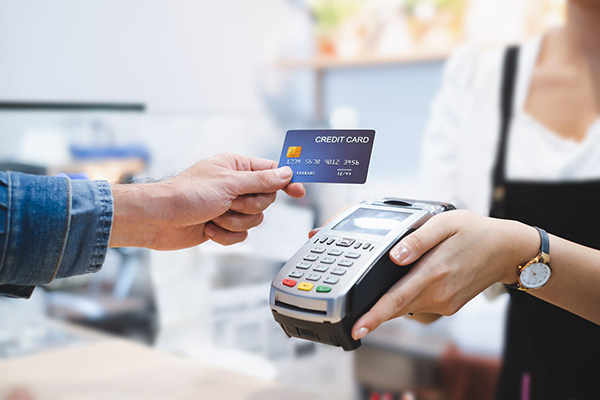The pandemic completely altered how we work, travel, and interact with our loved ones while transforming how we make purchases. Even though the technology has been there for a decade, contactless payments only became widely used due to the coronavirus principles of social seclusion and lesser human contact. Thus, many businesses are currently entering the game and attempting to create contactless solutions for their users.
The pandemic in 2020 bolstered the growth rate of contactless payments. Customers who are Covid-wary and prefer to avoid touching currency and POS terminals have taken a shine to contactless payment technologies. The desire of customers to use contactless payments for all sizes of transactions is notable. Furthermore, contactless payment is well-liked since it reduces time spent waiting in lines and at counters. However, contactless payment is more than just popular post-pandemic. Customers are likely to continue using it as long as the payment process is seamless. According to a report by MarketsAndMarkets, the global contactless payment market will grow at a CAGR of 11.7% to reach 17.9 billion by 2025.
A Paradigm Shift in Payment Methods
Technology has played a significant role in enabling the shift from cash to contactless payments with user-focused developments aligned to the changes in consumer behavior. Since the smartphone has evolved into both a wallet and a merchant Point of Sale terminal, the only requirements for contactless payment solutions today are a smart device and an internet connection. Moreover, with the introduction of new payment technologies transactions are now much easier and more secure. Thus, the two crucial elements- ease of use and improved security- are responsible for the widespread acceptance of contactless payments.
In addition, the acceptance of contactless payments will only grow in importance over the following years as technologies advance and the user experience is progressively enhanced. As the consumer is in charge of contactless payments, transacting using a contactless-enabled card or device is safer. Thus, the 16-digit account number, expiration date, and CVV code for sensitive payment accounts remain more secure. Also, due to the tap-and-go technology, digital payments are handled quickly and securely.
Newer Cashless and Contactless Payment Options
Credit cards: In the modern-day world, consumers widely use cashless transactions. In recent years, credit cards have become one of the most widely used payment options. People typically purchase goods on credit from suppliers and merchants. They expect to pay the due amount within a predetermined time frame.
Debit cards: Bank debit cards first appeared in the 1960s. It would be another two decades before this technique gained traction. Debit cards, like credit cards, let customers make purchases without cash, but they also have a personal identification number (PIN). Since some merchants take debit cards just like credit cards, but some might ask us to input the PIN.
Radiofrequency identification: Radiofrequency identification (RFID) technology has improved debit and credit card security. Moreover, various cashless and contactless payment systems, such as mobile devices like smartphones, smartwatches, and smart badges, also utilise it.
Developments in Contactless Payment Technology
Contactless payments technology is still developing to satisfy consumer demand and address security issues. The trends are listed below-
Biometric authentication:
A person’s biological traits are the foundation for this security measure. PINs and passwords are unnecessary with biometric authentication. Thus, businesses use biometric authentication to help protect their consumers by using tools like fingerprint scanners, iris scanners, and facial recognition.
In-vehicle payments:
The ability to pay from a customer’s vehicle can be available. Automakers and credit card firms are working to create in-vehicle payment platforms that let drivers use their cards without being connected to a phone or another device as the vehicle is already equipped with the necessary equipment to conduct transactions. In-vehicle payment technology, which is now used for parking, food, and fuel, can make it more convenient for your customers by giving them another method of payment and speeding up transactions.
Factors Contributing To The Growth Of Alternative Payment Methods
The internet has significantly impacted the requirement for solutions that may be used for e-commerce. In addition, the convenience of not having to carry cash and contactless payments are the driving forces for these approaches. Since, in the modern era, merchants have now realised the value of making online payments simple as internet access became more accessible in the early 1990s, customers can submit the details of their accounts with some online businesses or use third-party services to withdraw funds from their accounts. Moreover, debit and credit cards are accepted through payment processors, as apps have made it possible to buy things from physical debit cards to virtual credit cards, eliminating the need to carry cash.
Final Takeaway!
Cash has lost popularity in light of contactless and cashless payment methods in recent years. To make purchases, pay off debts, and pay for various things via technology, and online payment methods are used. However, more people used these substitutes during the pandemic, which made the future of contactless payment technology promising. There are currently more contactless payment terminals than ever before, which is only another step in this trend since many consumers already prefer digital payments to card transactions. Thus, these advancements are expected to only get more prominent in the coming future.
About the author:

Vipin Vindal is CEO of Quarks Technosoft.













